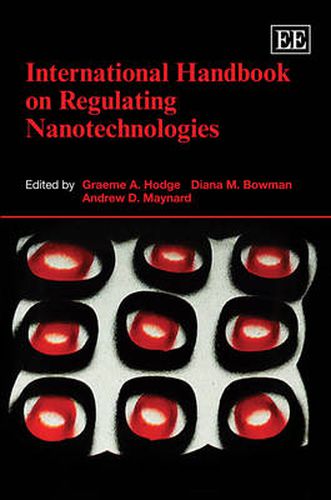Readings Newsletter
Become a Readings Member to make your shopping experience even easier.
Sign in or sign up for free!
You’re not far away from qualifying for FREE standard shipping within Australia
You’ve qualified for FREE standard shipping within Australia
The cart is loading…






As scientists and technologists discover how to engineer matter at the nanoscale in increasingly sophisticated ways, conventional approaches to ensuring safe use are being brought into question. Nanotechnologies are challenging traditional regulatory regimes; but they are also prompting new thinking on developing and using emerging technologies safely. In this Handbook, leading international authors from industry, government, non-governmental organisations and academia examine the complex and often controversial regulatory challenges presented by nanotechnologies. Across several disciplinary boundaries, they explore how the future regulatory landscape may evolve. From the Europe Union to the United States, workplaces to personal products, and statutory instruments through to softer approaches, it is clear that considerable vigilance will be needed in governing these powerful and novel technologies. To succeed, society will need new thinking, new partnerships and new mechanisms to balance the benefits of these technologies against their possible downsides. Anything less will prompt cries of illegitimacy and potentially compromise a promising new realm of technology innovation.
$9.00 standard shipping within Australia
FREE standard shipping within Australia for orders over $100.00
Express & International shipping calculated at checkout
As scientists and technologists discover how to engineer matter at the nanoscale in increasingly sophisticated ways, conventional approaches to ensuring safe use are being brought into question. Nanotechnologies are challenging traditional regulatory regimes; but they are also prompting new thinking on developing and using emerging technologies safely. In this Handbook, leading international authors from industry, government, non-governmental organisations and academia examine the complex and often controversial regulatory challenges presented by nanotechnologies. Across several disciplinary boundaries, they explore how the future regulatory landscape may evolve. From the Europe Union to the United States, workplaces to personal products, and statutory instruments through to softer approaches, it is clear that considerable vigilance will be needed in governing these powerful and novel technologies. To succeed, society will need new thinking, new partnerships and new mechanisms to balance the benefits of these technologies against their possible downsides. Anything less will prompt cries of illegitimacy and potentially compromise a promising new realm of technology innovation.